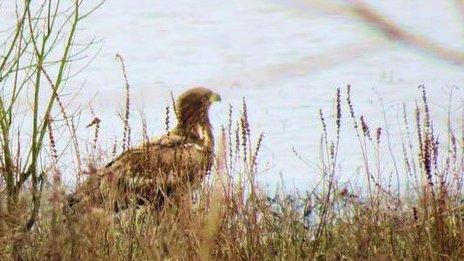Pair of white-tailed sea eagles spotted in Suffolk
- Published
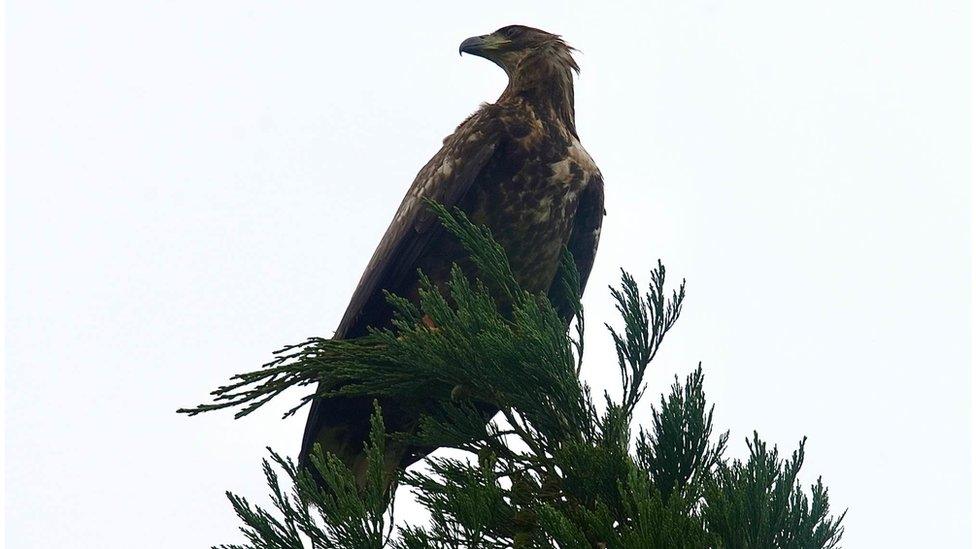
At one point the birds (pictured in Suffolk) were extinct in the UK
A pair of rare white-tailed sea eagles have been spotted in west Suffolk.
The species, which is Britain's largest bird of prey with a wingspan of up to 2.5m (8.2ft), was driven to extinction in the UK in the 20th Century.
A reintroduction programme has helped the birds, nicknamed "flying barn doors", return to the Britain.
Birdwatchers, who were alerted to the rare sighting, have said they feel "lucky" to have now seen one of the birds.
Eileen Wyatt and Angela Woodrow from Norwich were holidaying in Suffolk for a few days when they learnt the bird was nearby.
Ms Wyatt said: "It's fantastic; we're so excited.
"It was wonderful, it flew over our heads as we arrived and we can't believe how lucky we are."
Her companion said: "It's made our holiday."
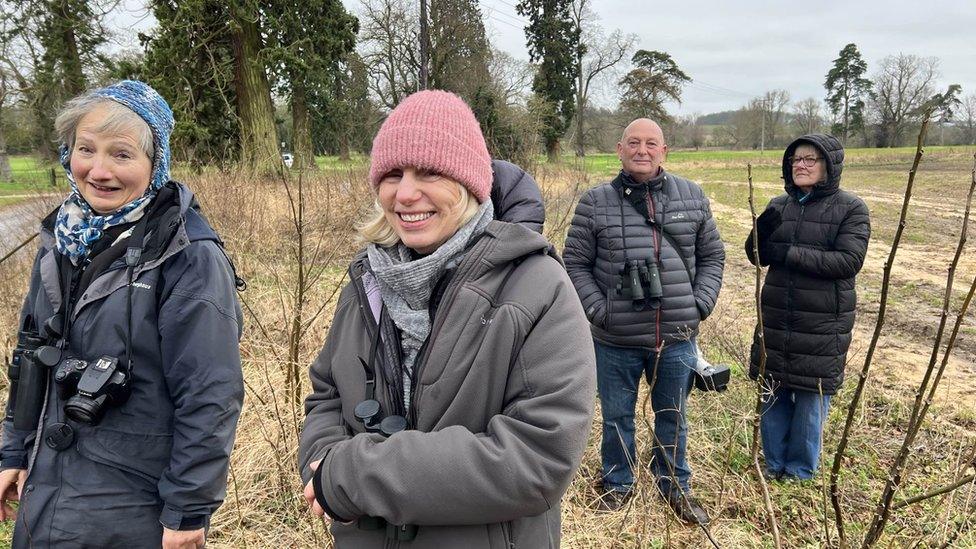
Twitchers armed with binoculars and cameras have said they feel lucky to have seen such a rare species
Andy and Glenys Martin, from Stowmarket, said they never thought they would see the bird in Suffolk.
Mr Martin said: "It's great, [I've] seen it in the Isle of Mull but it's nice to be here. It's great to see it, a massive tick for this year."
Ms Martin said: "We might never see it again."
It was believed both birds had already been ringed and the male of the pair was the offspring of one of the first pair to be reintroduced in the UK.

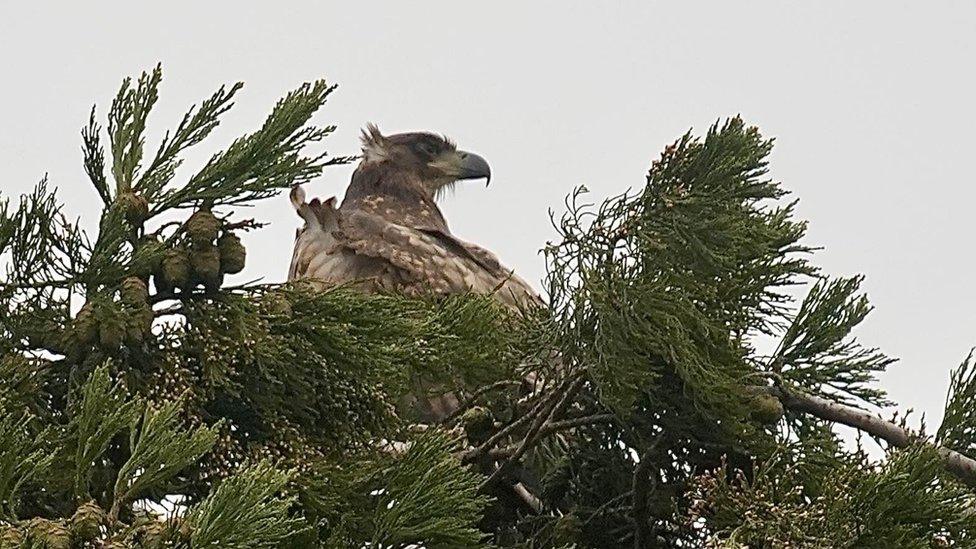
White-tailed sea eagles
also known more simply as white-tailed eagles
brown plumage with pale head and neck, and white tail feathers
diet includes fish (hence they are also known as sea eagles), other birds, rabbits and hares
some farmers critical of their reintroduction due to predation of lambs, but RSPB say they are mostly eaten as carrion/when already dead
driven to extinction in the UK in the early 20th Century due to illegal killing
largely resident in Scottish Highlands, coasts of southern England, Norfolk and Suffolk, and south-west coast of Ireland
Schedule 1 protected status means it is illegal to disturb the bird
Source: RSPB, external

A spokesman for the Suffolk Wildlife Trust said "the current [UK] population, including the pair seen near Bury St Edmunds, are descended from reintroduced birds".
"The sight of white-tailed eagles further inland in Suffolk demonstrates how they are adapting in the face of habitat loss and climate change," he said.
"However, it is common for them to be this far inland and they can travel vast distances cross-country given a fair wind.
"One of the eagles seen near Bury St Edmunds is a younger bird from The Netherlands. Younger white-tailed eagles tend to be "vagrant" - leaving their family of origin in search of food and potential new territories.
"The birds can be quite opportunistic and take advantage of quieter parts of the countryside to hunt on various prey. In the absence of fish, they will hunt terrestrial animals such as small deer, hare and geese."

Follow East of England news on Facebook, external, Instagram, external and X, external. Got a story? Email eastofenglandnews@bbc.co.uk, external or WhatsApp 0800 169 1830
Related topics
- Published6 January 2024
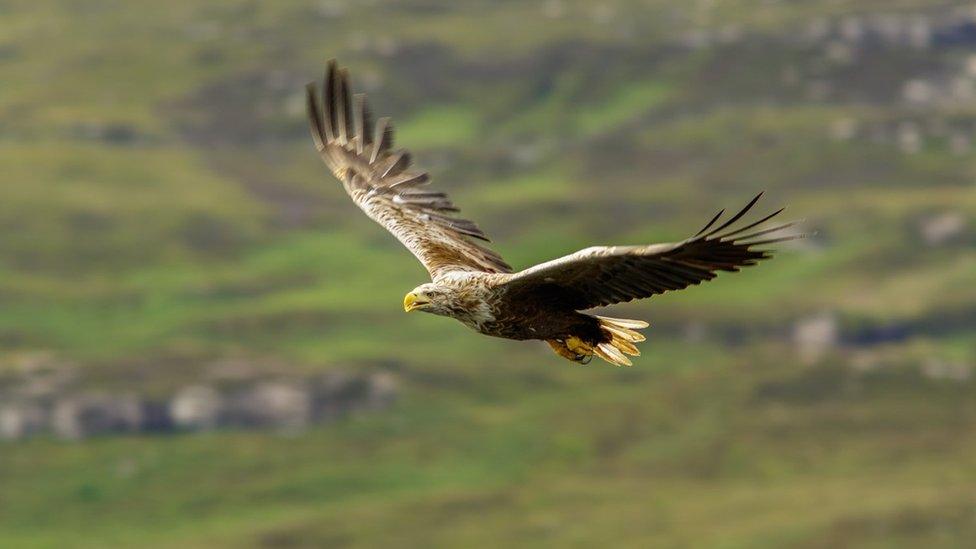
- Published19 July 2023
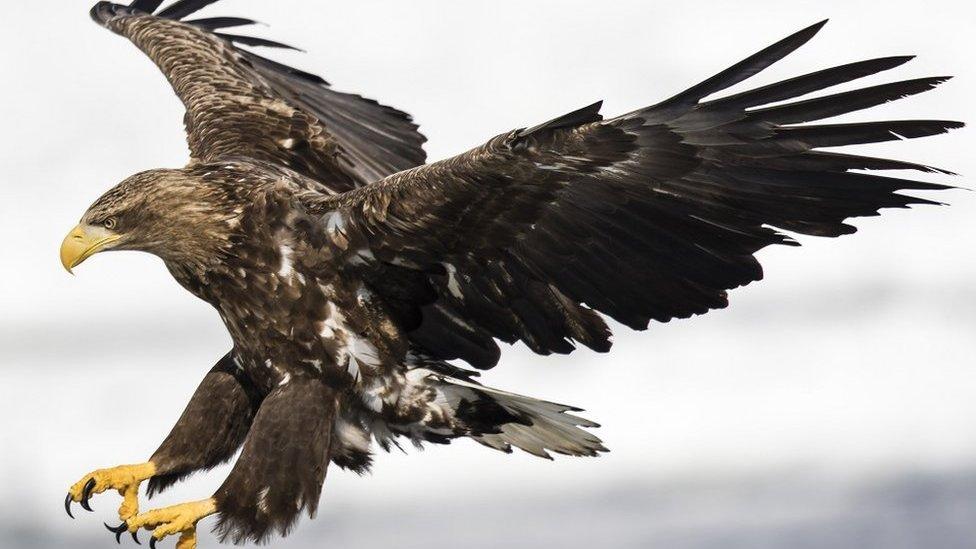
- Published15 March 2015
